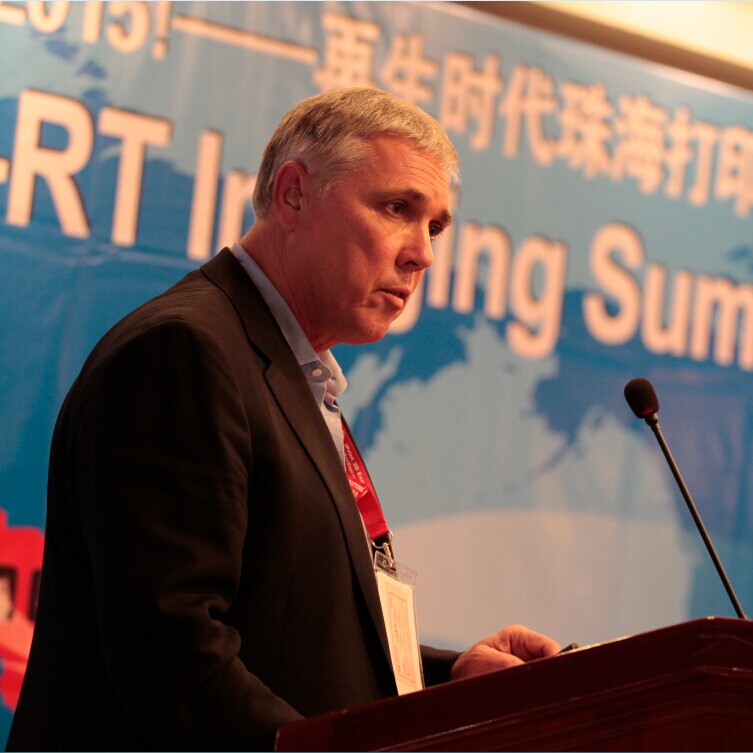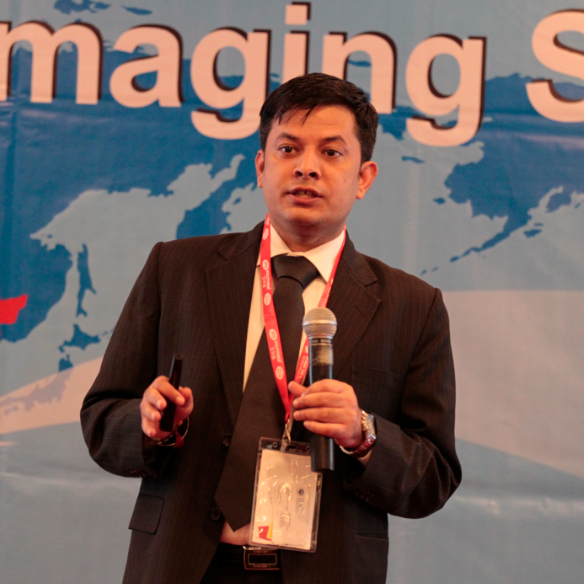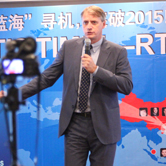Industry Consultant Discussed Chinese Patents
 Recent lawsuits have vividly demonstrated that the print consumables industry is evolving and all players now have to wake up to the intellectual property rights issues.
Recent lawsuits have vividly demonstrated that the print consumables industry is evolving and all players now have to wake up to the intellectual property rights issues.
At 2014 RT Imaging Summit Zhuhai, industry consultant and commentator Steve Weedon delivered a glimpse of the current world patent landscape and a deep analysis of the evolvement of Chinese patents.
Steve maintained that the industry has become a litigious industry with OEMs fighting against each other for market share every day and they contending with a successful aftermarket. OEMs differentiate themselves by innovative products created out of research and development. In the 35 or so years of history, the aftermarket has offered non-infringing imaging products as well as infringing imaging products. So the OEM will defend their patents and litigate against infringers. Steve warned infringers should beware they will be caught and sued if they infringe the OEMs’ patent rights.
Steve explained that a patent does not give a right to make or sell an invention. Rather a patent provides the right to exclude others from making, using, offering for sale or importing the patented invention, for the term of the patent, which is usually 20 years from the filing date. That is what the OEM’s who hold tens of thousands of patents are exercising their right to do. They are doing what we would if we were in their shoes.
As was reviewed by Steve, China’s patent law was not in force since until 1984, only 30 years with its first patent issued in the same year for a walking stick type seeder. So the facts are that whilst the West initiated patent ideas and patent law long ago China is very new to a patent system. But it was not because they are not inventive, it seems for whatever reason they did not see the importance of patent protection, the same way we did in the West. The speed at which they now embrace the patent system is remarkable.
China joined the WIPO in 1980, 4 years before its first patent laws were adopted. The “Open Door Policy”, which ended Chinese isolationism, required China to begin recognizing intellectual property rights. Chinese patent law reflects many of the norms established in European Patent conventions that have been modeled and shaped over hundreds of years. Now the aim in China is to motivate innovation and technology inventions and become something much more than just a low cost manufacturing base with a reputation for making good copies.
According to the speaker, the WIPO claims that by the end of 2012 more than 8.66 million active patents exist. The WIPO IP Statistics report 2013 shows that annual filings of patents to WIPO member state patent office are increasing by about 9% per year. Growth in patent filing activity can be largely attributed to the increasing numbers of applications filed with the IP office in China.
Steve stated China leads the world in patent filings. Some in the West are skeptical of the quality of filings believing most to be relatively trivial ideas and utility patents. Not so says WIPO. A study to scrutinize Chinese patents confirms that a growing proportion meet world – wide standards. China lead the way in utility model applications by top 10 patent offices, trademark patents and industrial patents.
China may have been slow to start but now it is fast waking up to patents and investing heavily into patented solutions for imaging products. Today more patents already exist in the imaging aftermarket in China than anywhere else in the world, combined. More patent lawyers and patent engineers are employed in Chinese imaging product companies than anywhere else in the world, combined.
And it is Chinese companies that are rising to the challenges of OEM patents with work around solutions that will keep the aftermarket industry moving forward into the future.
Patents are important. China has now become the biggest country of inventors and patent filers in the world, and it wants to protect its own technologies of the future. So China must recognize and respect all patent holders rights in the same way we all have to in the West.
“Fortunately, we have some world – class companies that exist within our industry here in China, they set the pace of this industry and set the example of modern China. They are all here at the Remax Asia Expo,” said Steve. “So I remain optimistic about the future of the legitimate imaging aftermarket because the glass is always half full for me, your view point may be pessimistic. I am , however , certain that patent holders will continue taking legal action wherever infringement occurs and I am sure non infringing solutions to patent issues will continue to be created and led by the Chinese. Never underestimate the ingenuity of the legitimate imaging aftermarket, period. The industry will learn a harsh lesson from the litigious period we are in right now,” added the speaker.
He noted that aftermarket needs to stop infringing valid patents, it needs to stand up to defend itself and challenge weak and invalid patent claims that prohibit its legitimate business. He maintained the industry needs to unite into a single strong voice to be taken seriously and be heard.
“What I have come to like about the Chinese is that they see the big picture, they plan for the long term, they have great vision, along with a strong desire to succeed. China is not the problem, it is a major part of the solution,” stated Steve with confidence.





Leave a Comment
Want to join the discussion?Feel free to contribute!